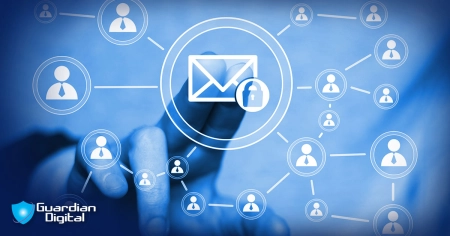Modern attacks are good at looking real. An email that seems to come from your bank could just as easily be a fake. SPF, DKIM, and DMARC make it harder for that to happen by exposing sender fraud and filtering out dangerous messages before they reach you.
This article explains how each email security standard works and why a solid email authentication setup is no longer optional in 2025. With phishing becoming more believable every day, failing to implement these protocols opens the door to spoofing, compromised credentials, fraudulent wire transfers, and breaches.
What Is Email Spoofing and Why Does It Work
Email spoofing forges the “From” line so a message looks like it came from someone you trust. Banks, colleagues, and even IT support are common covers. It’s not a niche tactic. More than 90 percent of email attacks involve spoofing in some form. Once the sender looks familiar, attackers can push victims to click, hand over credentials, or move money. For organizations that run on email, building spoofing defenses is not optional.
SPF, DKIM, and DMARC: How They Block Forged Email
Three protocols form the backbone of anti-spoofing. Each covers part of the problem. Together, they stop most fraudulent mail before it reaches users.
- SPF (Sender Policy Framework). Tells receiving servers which hosts are authorized to send for your domain. Anything outside that list fails the check and can be blocked.
- DKIM (DomainKeys Identified Mail). Signs each outgoing message with a private key. The recipient validates it against your DNS record with a public key. A valid signature proves the message wasn’t altered and came from your domain.
- DMARC (Domain-based Message Authentication, Reporting, and Conformance). Adds the policy layer. If SPF or DKIM fail, DMARC instructs the receiving server whether to deliver, quarantine, or reject the message. It also generates reports so you can see who is trying to use your domain.
The Gaps Attackers Still Exploit
Even with all three in place, spoofing is not solved. Each protocol has blind spots.
- SPF checks the Return-Path header, not the visible “From” address users see.
- DKIM protects message integrity, but not the display name.
- DMARC only works when headers align and policies are configured correctly. Poor alignment or weak policies undermine it.
Building a Stronger SPF, DKIM, and DMARC Defense
SPF, DKIM, and DMARC work best as a set. They need to be monitored and adjusted as infrastructure changes. Reports should be reviewed and acted on. And technical controls must be backed with awareness training so employees know how to spot phishing attempts that slip past filters. The combination is what lowers risk: authentication at the gateway, and users prepared for what makes it through.
SPF, DKIM & DMARC FAQ
What are SPF, DKIM, and DMARC in email security?
They are authentication protocols designed to prevent sender fraud. Together, they confirm the source of a message and reduce spoofing.
How do SPF, DKIM, and DMARC work together?
SPF verifies the sending IP. DKIM applies a signature to confirm that the content hasn’t been changed. DMARC enforces policy when either of those checks fails.
What are the limitations of SPF, DKIM & DMARC?
SPF only validates the Return-Path domain. It doesn’t cover the visible “From” address, which attackers often abuse. DKIM’s signature lives in the header, where users never see it. DMARC is only effective when aligned with both SPF and DKIM, and misalignment is common.
Do small businesses need SPF, DKIM, and DMARC in 2025?
Yes. Without them, attackers can spoof a domain to launch phishing campaigns. With them, businesses keep delivery rates high and reduce the risk of their brand being used in attacks.
Keep Learning About SPF, DKIM, and DMARC 
Spoofing and fraud are still common entry points in attacks. SPF, DKIM, and DMARC catch a lot of this traffic, but they’re not meant to stand alone. They’re strongest when treated as part of a larger system. Most teams get better results when these controls are paired with a cloud email security provider that can manage enforcement and handle misconfigurations before they cause issues.
Security works best when it’s layered. Training staff, tuning gateways, and overlapping checks make single points of failure less useful to attackers. Staying current with protocol changes and new bypass techniques matters just as much. Email is a moving target, and gaps appear quickly when updates are ignored. It also helps to stay informed about the latest updates on email security to keep your online business safe.




